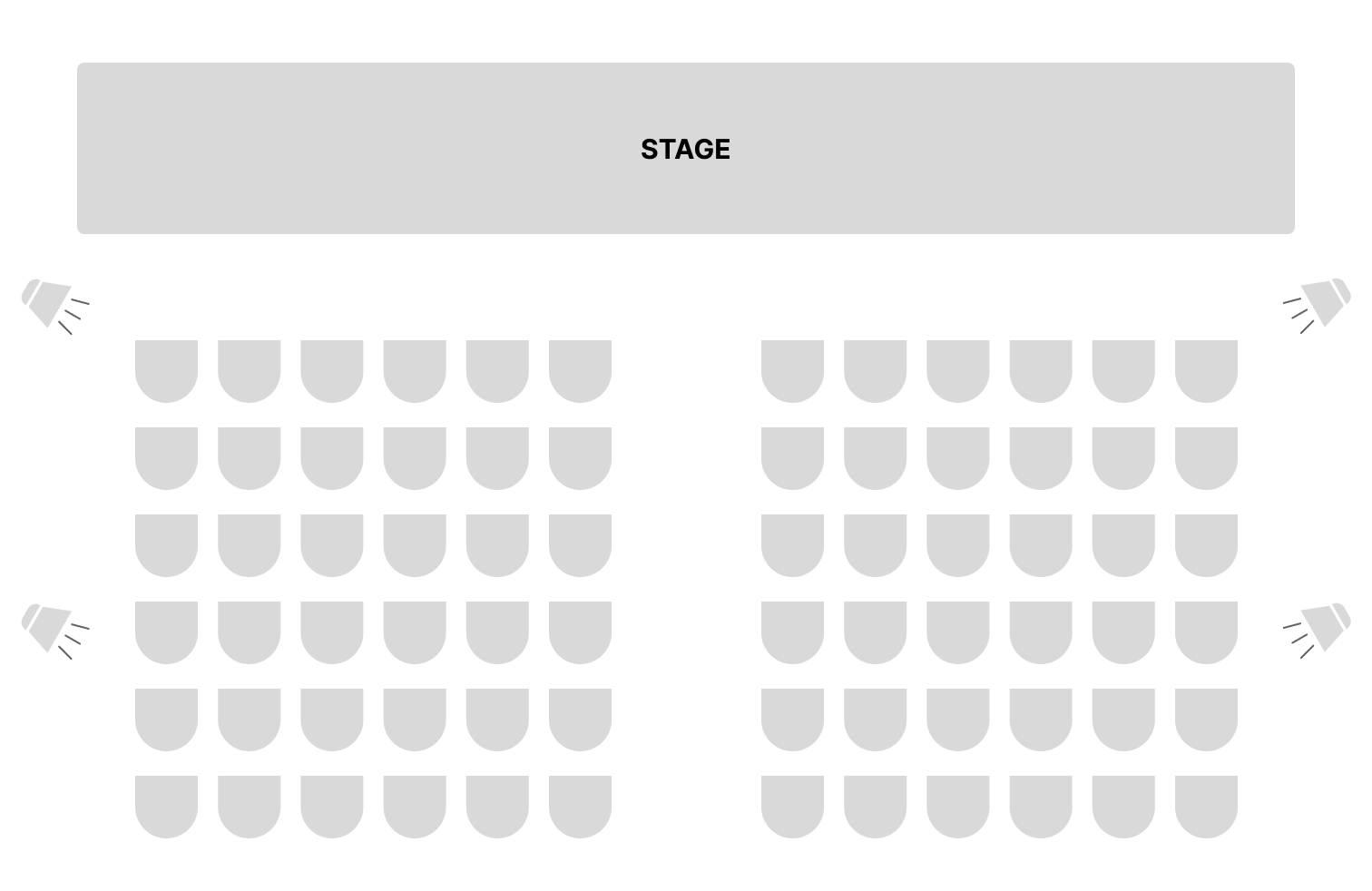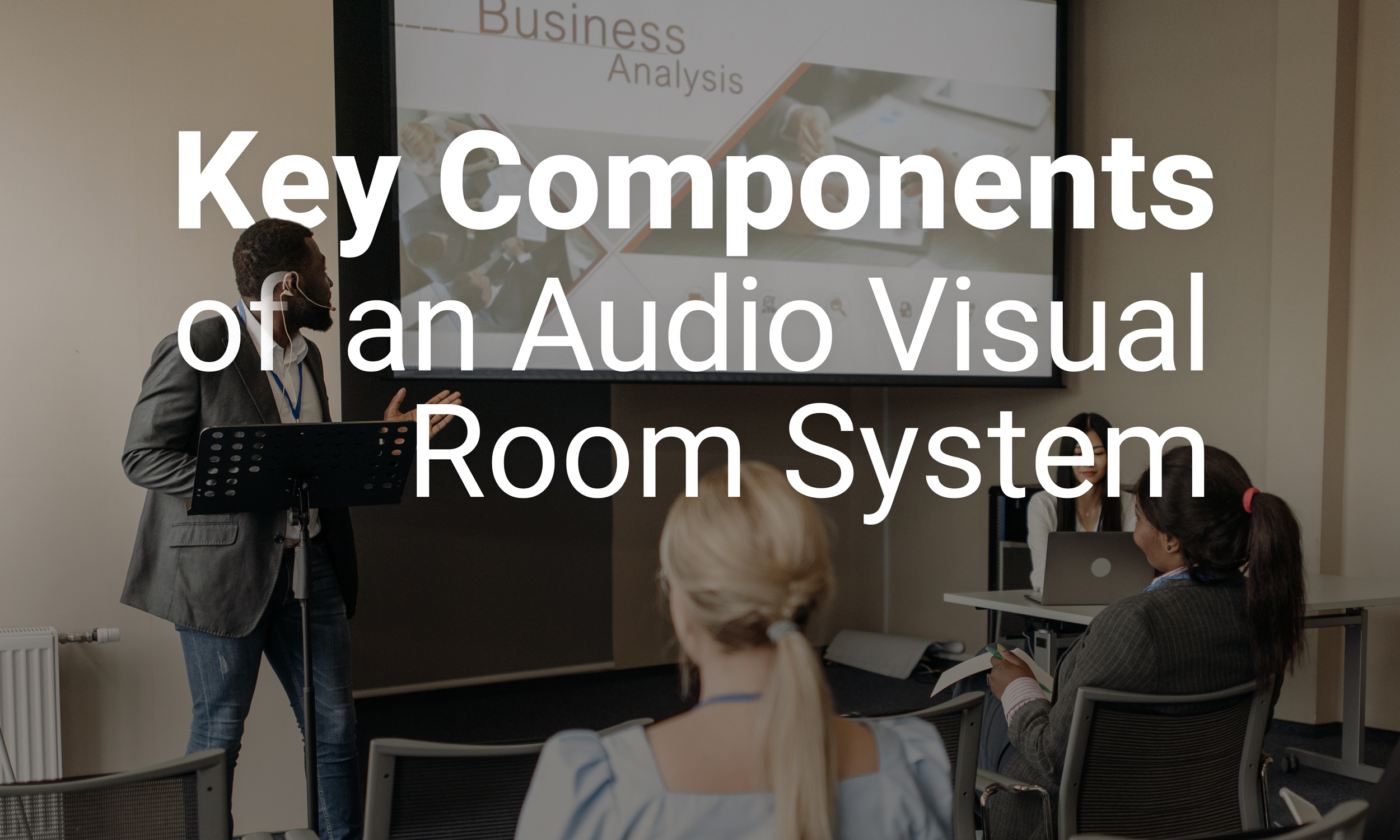
Solution Variations
You’ve been tasked with upgrading the audio experience for your auditorium. There are so many variables with audio that it can be hard to know where to begin. Which kind of microphones do you have (or need)? Where will the audience be seated? What materials, surfaces, and finishes are in the auditorium? Achieving ideal performance in your auditorium goes beyond classifying it as “small” or “large.” Check out some tips below for optimizing sound in your space.
Sound Reinforcement and Voice Lifts
One of the most common requests is to make voices louder. Dig a little deeper, though, and the real goal is better intelligibility – and there are two distinct ways to achieve clearer vocals without flooding the room with loudness.
Sound reinforcement is your goal if you want to amplify one presenter speaking to an audience. Loudspeakers in the room are used to increase the volume of your presenter. This could be used for the middle and back rows, as well as an upper deck or even auxiliary seating rooms.
Voice lifts are less applicable to auditoriums, though still an option in lecture hall environments. A voice lift provides enough sound reinforcement to the room for the farthest listener to hear as well as the closest audience members. You’re amplifying your presenter(s) as well as audience members who are participating, allowing everyone to hear the person talking.
Loudspeaker placement
Once you’ve determined your goal for boosting your presenter, you’ll need to consider where to place your loudspeakers and how many you’ll need. Stage microphones will reject sound from the rear, meaning you have flexibility when it comes to placing speakers along the left and right of your audience, facing towards the back of the house.

Example placement for box speakers in a small auditorium.
You will want to avoid placing loudspeakers in a way where sound will be directed towards the stage. Placing your speakers close to the rear wall will limit the benefit to your audience and most likely cause sound to reflect. Make sure to space the speakers out evenly for the most effective coverage - you are trying to allow everyone in the audience to hear your presenter, without being too loud for some listeners.
Acoustic treatments
Your room - the auditorium itself - is the last component in your sound system. Just as much as the microphone, mixer, and loudspeakers, the surfaces that your audio interacts with will shape what your audience hears. When sound waves come from your presenter and your equipment, they reflect off of some surfaces, are absorbed by others, and effectively scattered by some.
Hard surfaces, such as the stage, walls, or glass will reflect sound, causing your audience to hear it twice: once from your loudspeakers and a second time from the reflection. A good acoustic design will take into consideration first reflection points for your sound, and place absorptive material at those locations.
At this point you might wonder aloud, “Why not cover the room in absorbers?” Sure, you can cut down on excess reflections with curtains, carpet, and soft panels on the walls. While this is a great suggestion, especially in the back of an auditorium, too much absorption will leave the room sounding “dead.” In short, we expect to hear at least some reflections because we often do when we’re indoors.
Conclusion
Tons of variables will contribute to what your audience will (or won’t!) hear. With these tips, you should be able to understand some of the strengths and weaknesses of your current auditorium setup, and what your next steps might be. As always, your scenario will pose unique challenges, and we’ve found many organizations benefit from consulting with an AV professional like Profound Technologies. Don’t hesitate to reach out to us or set up a meeting to discuss your auditorium project.


